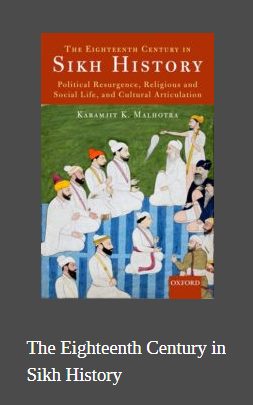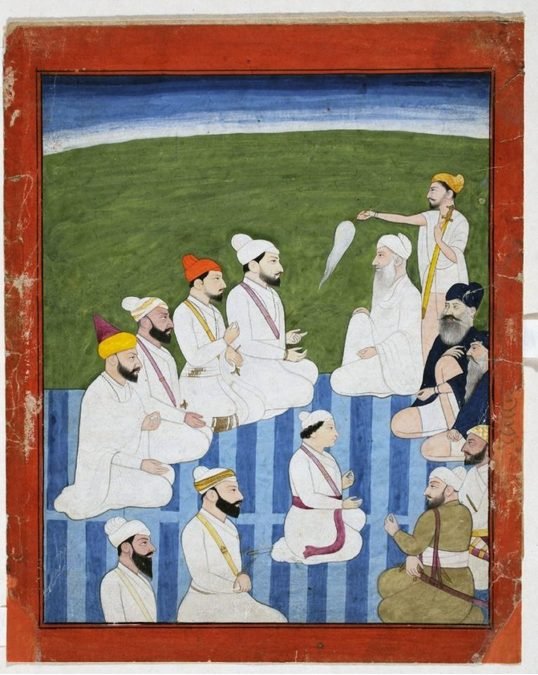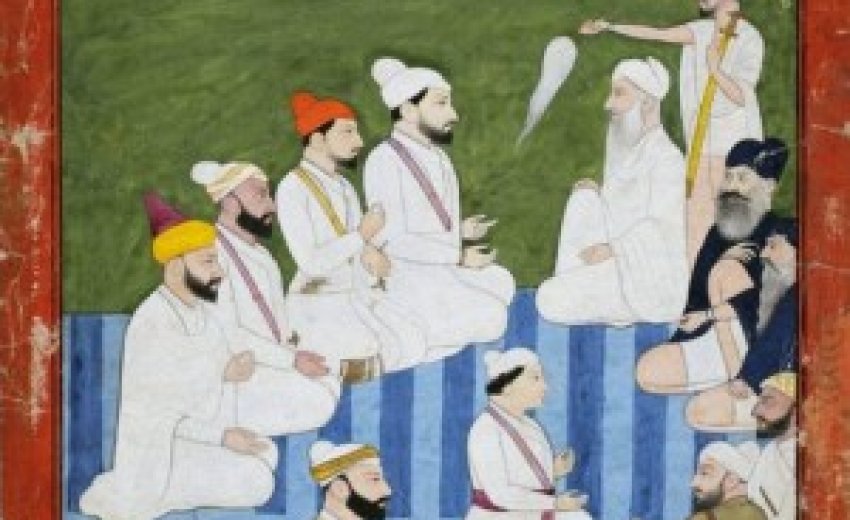The transformative era in Sikh history
By Karamjit K. Malhotra

 he ideology of ‘Raj Karegā Khalsa’ was enunciated in the time of Guru Gobind Singh. It provided the background for political struggle and conquests of the Sikhs after him. The roots of doctrinal developments and institutional practices of the eighteenth-century Sikhs can be traced to the earlier Sikh tradition. The basic Sikh beliefs like the unity of God and the ten Gurus and the doctrines of Guru Panth and Guru Granth continued to figure as the foremost tenets. The sanctity of the dharamsal was enhanced as the locus of the Granth and the Panth as the Guru. The term Gurdwara came to be increasingly used, particularly for the dharamsals associated with the Gurus and the Sikh martyrs. With its sacred tank (amrit sarovar), the Harmandar, and the Akal Bunga, Ramdaspur (now called Amritsar) became the premier centre of Sikh pilgrimage. Rejection of Brahmanical, Islamic, and some popular practices was a logical corollary of the exclusive concern with individual and congregational worship.
he ideology of ‘Raj Karegā Khalsa’ was enunciated in the time of Guru Gobind Singh. It provided the background for political struggle and conquests of the Sikhs after him. The roots of doctrinal developments and institutional practices of the eighteenth-century Sikhs can be traced to the earlier Sikh tradition. The basic Sikh beliefs like the unity of God and the ten Gurus and the doctrines of Guru Panth and Guru Granth continued to figure as the foremost tenets. The sanctity of the dharamsal was enhanced as the locus of the Granth and the Panth as the Guru. The term Gurdwara came to be increasingly used, particularly for the dharamsals associated with the Gurus and the Sikh martyrs. With its sacred tank (amrit sarovar), the Harmandar, and the Akal Bunga, Ramdaspur (now called Amritsar) became the premier centre of Sikh pilgrimage. Rejection of Brahmanical, Islamic, and some popular practices was a logical corollary of the exclusive concern with individual and congregational worship.
Repudiation of non-Sikh, especially Brahmanical, practices was built into the evolving Sikh rites and ceremonies. Before the institution of the Khalsa, compositions of Guru Granth had come to be seen as relevant for different stages in a Sikh’s life: the Anand for birth; the Anand, Sohila, Ghoṛiān, and the Lāvān for ceremonies related to marriage; and the Japujī, Alahṇiān, Anand, and the Sadd for death. Replacing the charan amrit, Guru Gobind Singh had introduced initiation of the double-edged sword (khande kī pahul). A person from any caste, creed, or gender could be initiated into the Sikh fold. Integral to all ceremonies was the collective prayer (ardās), followed by the partaking of kaṛāh parsād (sacred food), and often also the langar. The obligations and proscriptions attending the new initiation rite transformed the initiate in a fundamental way and strengthened the Kesdhārī vis-à-vis the Sahajdhārī identity.
 |
| Sardar Jai Singh Kanhaiya as Suzerain of the Hill Chiefs. Source: Government Museum and Art Gallery, Chandigarh (India). Image used with permission. |
Historical change and needs of the new community led to the emergence of new literary forms: the Rahitnāmā, the Gurbilās, the Shahīd Bilās, and the Ustat. The Vār and the Sākhī forms came down from the seventeenth century. Much of this literature was produced to instruct and inspire. An evolving historical consciousness is evident in the expanding scope of Sikh literature. Apart from the life and message of Guru Nanak, it came to include episodes concerning the successor Gurus, narratives of the life of Guru Gobind Singh, institution of the Khalsa, the Khalsa rahit, the Khalsa warriors and martyrs, glory of Amritsar and other places associated with the Gurus, besides the lives of the eminent Sikhs.
The political revolution underpinned by the ideal of ‘Rāj Karegā Khalsa’ had raised the erstwhile plebeians to the status of rulers and jagirdars who derived inspiration from Khalsa ideology. The Sikh identity emphatically became the Khalsa identity as ‘the third (tīsar) panth’. The eighteenth century in Sikh history became a bridge between what had gone before and what came afterwards. Thus, the period which started with the ideology of ‘Rāj Karegā Khalsa’ ended with the fact of ‘Khalsa Rāj’ when Sikh sovereignty was declared at Amritsar in 1765.
Karamjit K. Malhotra is Assistant Professor in the Department of Punjab Historical Studies, Punjabi University, Patiala, India. She has edited a book titled The Punjab Revisited: Social Order, Economic Life, Cultural Articulation, Politics, and Partition (18th– 20th Centuries) , and published over a dozen research papers on Sikh history in national and international journals. She is also the author of The Eighteenth Century in Sikh History (OUP India, 2016).

